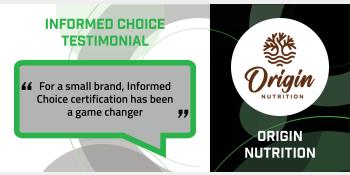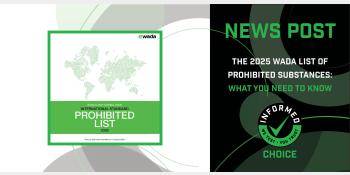Informed Choice News
Raw Material Risks
With ingredient costs on the rise, could raw materials be putting your products at risk for contamination?
The dietary supplement industry has faced numerous effects from the COVID-19 global pandemic, but none have been greater than the impact on the global supply chain. Ingredient shortages, transportation bottlenecks and production disruptions have continued to plague manufacturers and brands.
As a result of ingredient shortages, prices for these materials continue to climb, forcing manufacturers to search for alternative sources. Supply chain issues potentially open the door for suppliers to sell substandard ingredients to brands and manufacturers – ingredients that hold the potential to be adulterated or contaminated with substances that present a doping or health risk.
LGC’s dietary supplement testing has shown that raw materials are often a leading cause of inadvertent contamination for both manufacturing equipment and finished supplement products. Upon discovery of a contamination issue, LGC assists those involved in identifying the underlying cause of contamination and offering the appropriate solutions.
An example of this involves a brand looking to certify a product that was using a new manufacturing facility. The registration samples provided tested positive for high levels of Methylhexanamine, a banned stimulant. As in all cases of contamination, LGC began the investigation process with the brand and manufacturer.
In this case, the audit process indicated the manufacturing facility had never handled banned substances, especially methylhexanamine and the product contained no stimulants. LGC focused its attention on the raw materials and tested each lot of each ingredient used in the product. Not surprisingly, it was determined that it was a raw material as the culprit. What was surprising was that it was not one of the active ingredients, but microcrystalline cellulose which is an excipient used to help the bulk material run through its equipment easier.
The investigation showed that the raw material came from China and was manufactured in a facility with inferior control procedures. The production batch was destroyed, and an expensive lesson was learned by the manufacturer to better audit their own supply chain and ingredient suppliers. This could have been any raw material purchased by a manufacturing facility if strict audits of their suppliers were not carried out.
| Raw Material | Contaminant | Country of Origin |
| Agmatine Sulfate | Dimethylbutylamine | China |
| Caffeine | DHEA | China |
| Calcium AAC | DHEA | China |
| Calcium Pyruvate | Nandrolone | China |
| Magnesium Ascorbate | DHEA | USA |
| Magnesium Chelate | DHEA | USA |
| Microcrystalline Cellulose | Methylhexaneamine | China |
| Silicon Dioxide | DHEA | China |
Examples of raw materials implicated in contamination investigations conducted by LGC since 2013.
Quality assurance for the long run
Although supply chain challenges continue, dietary supplement brands need to maintain a high level of product quality assurance. Ingredients and raw materials can contain hidden banned compounds or can become contaminated during the manufacturing process. Furthermore, not all countries have the same quality assurance standards, increasing the likelihood of contamination. Third-party supplement testing offers an added level of quality assurance to finished product brands.
Informed Choice certification includes a pre-certification process in which the product ingredients are reviewed in detail to ensure no high-risk ingredients are being used. This process also includes an in-depth manufacturing assessment to review the quality measures in place at a production facility, including raw material traceability to reduce the risks of inadvertent contamination.










